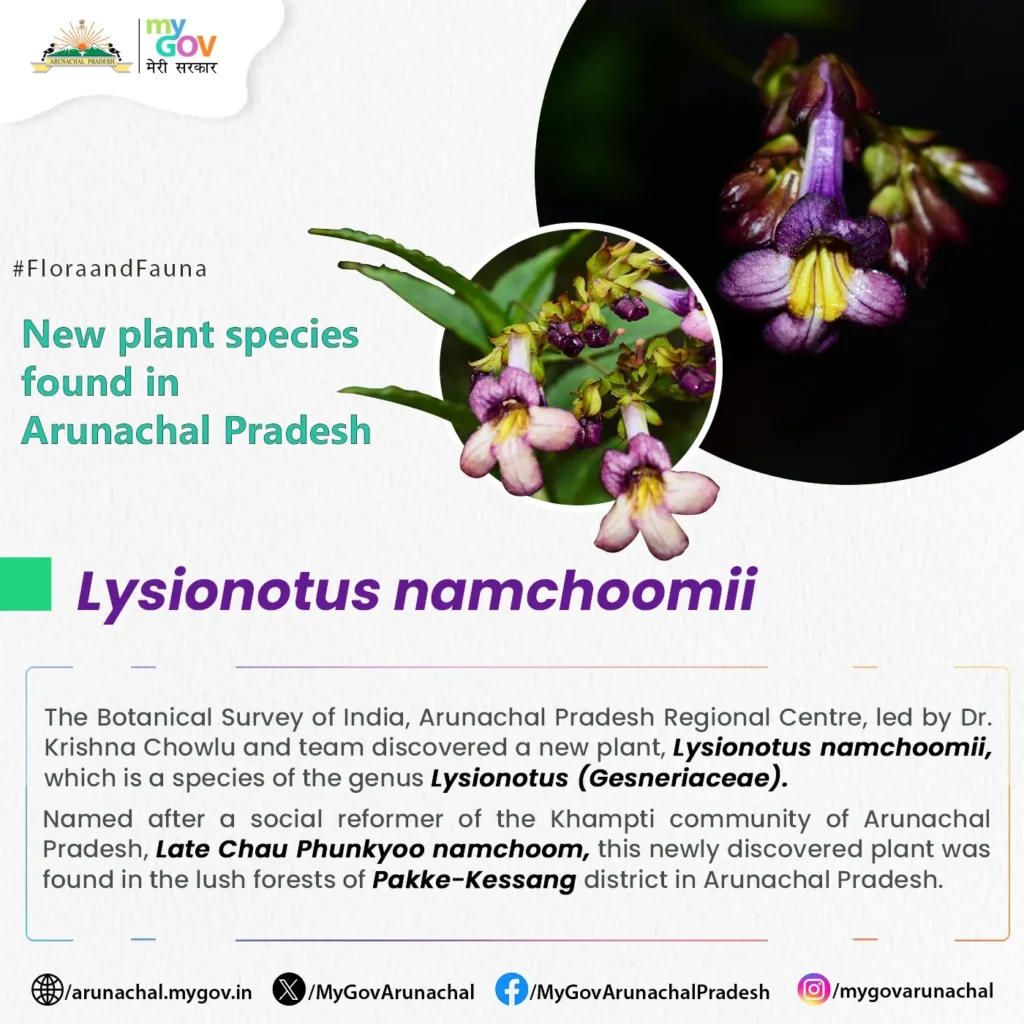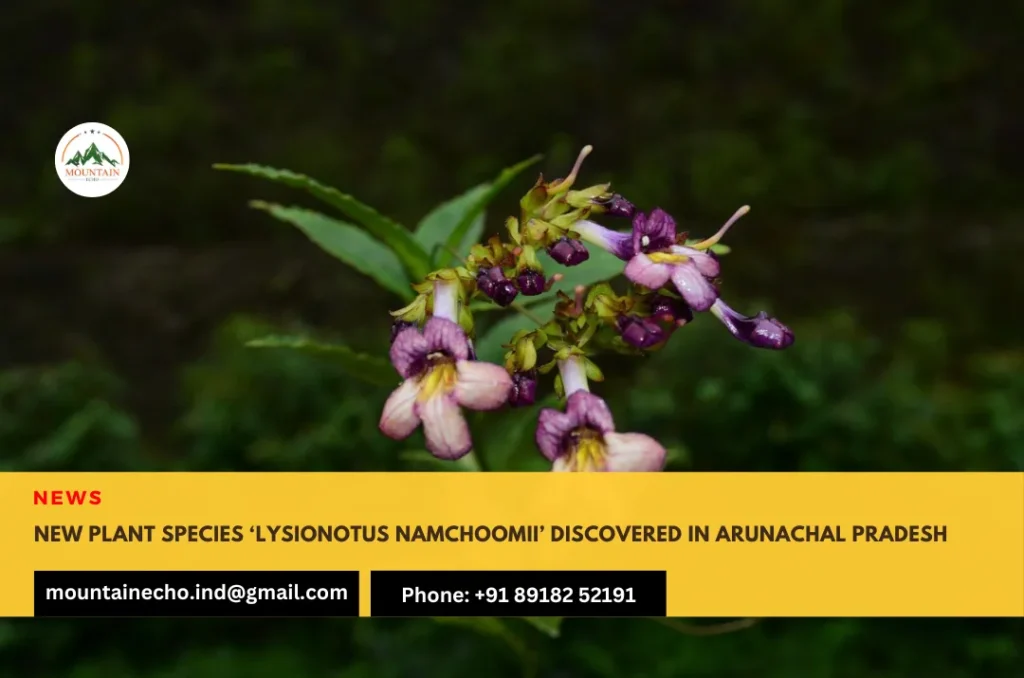New plant species ‘Lysionotus Namchoomii’ discovered in Arunachal Pradesh
Scientists at the Arunachal Pradesh Regional Centre of the Botanical Survey of India (BSI) have discovered a new plant species known as Lysionotus Namchoomii. The findings were published in the international peer-reviewed journal, Turczaninowia.
It was found in the Pakke-Kessang district of Arunachal Pradesh, in the eastern Himalayas.
The plant is an epiphyte, meaning it grows on other plants for support. Lysionotus species are primarily epiphytic, lithophytic, or terrestrial evergreen erect or climbing subshrubs. The new species has thick leaves and attractive purple flowers.
Mountain Echo now has WhatsApp Channel. Please join us there.
The new species is named in honor of Late Chau Phunkyoo Nomchoon, a renowned social reformer from the Khampti community in Arunachal Pradesh who was also a nature lover and promoter of education and healthcare in the community.
The recently discovered new plant species ‘Curcuma kakchingense’ along the banks of Sekmai river in Manipur was classified as “Data Deficient” (DD) under the IUCN Red List category and potential threats to its existence could not be fully assessed yet.
However, the conservation status of this new species discovered in Arunachal Pradesh is provisionally assessed as “Critically Endangered” according to the International Union for Conservation of Nature (IUCN) Red List. This is due to its restricted distribution and small population size. The plant is also threatened by habitat loss due to deforestation and agriculture.

The discovery of Lysionotus Namchoomii is a significant contribution to our understanding of the biodiversity of Arunachal Pradesh. The plant is likely to be of interest to scientists and conservationists.
Lysionotus Namchoomii is a small, evergreen shrub. The leaves are opposite, elliptic to oblong, and up to 8 cm long. The flowers are solitary, and up to 2 cm long. The corolla is 5-lobed. The stamens are 4, and the ovary is superior.
Dr. Krishna Chowlu, the only woman scientist at BSI from Arunachal Pradesh, noted that the state is rich in biodiversity, with several new plant discoveries made in recent years.
The discovery of Lysionotus Namchoomii is a reminder of the importance of conserving the biodiversity of Arunachal Pradesh. Pakke Kesang district is home to a wealth of plant and animal species and remains largely unexplored, suggesting that further studies could lead to more botanical discoveries in the region.



